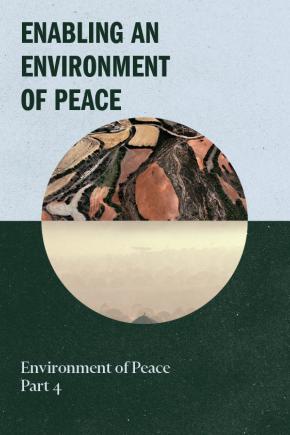Enabling an Environment of Peace: Environment of Peace (Part 4)

SIPRI’s Environment of Peace initiative focuses on managing the risks that are created by two interwoven crises: the darkening security horizon and the immense pressures being placed on the natural world and the systems that support life on earth.
The Environment of Peace research report is an in-depth look at the evidence base and analysis of the policy report Environment of Peace: Security in a New Era of Risk, including many real-world case studies. The report is the result of two years’ work by more than 30 researchers, led and guided by some of the leading voices in the fields of environment and security.
Accessibly designed, the new research report is available to download in four parts: Elements of a Planetary Emergency (part 1); Security Risks of Environmental Crises (part 2); Navigating a Just and Peaceful Transition (part 3); and Enabling an Environment of Peace (part 4).
This part—Enabling an Environment of Peace (part 4)—examines the legal and institutional landscape within which the twin crises—and humanity’s responses to them—play out. Lead authors Melvis Ndiloseh, CEO of the Foundation for Peace and Solidarity and Senior Lecturer at the International Relations Institute of Cameroon, and Hafsa Maalim, SIPRI Associate Senior Researcher, identify policy options for change. Part 4 surveys the various international, regional and national-level agreements that link environmental safeguards to security concerns and identifies critical gaps. It looks at the many initiatives among UN agencies and civil society that aim to reduce security risks and environmental stressors in tandem, from the UN Mission in Somalia to educational non-governmental organizations in the Middle East.
Download a separate annex that assembles a number of in-depth case studies and other input papers that were commissioned to inform the research and analysis in part 4 here.
Read the overview to the four-part research report here.
Read Elements of a Planetary Emergency (part 1), which lays out the conceptual and evidential landscape for Environment of Peace, here.
Read Security Risks of Environmental Crises (part 2), which shows how combinations of environmental and security phenomena are generating complex risks, here.
Read Navigating a Just and Peaceful Transition (part 3), which focuses on needed transitions towards sustainability and climate resilience, here.
Read the policy report Environment of Peace: Security in a New Era of Risk here.








